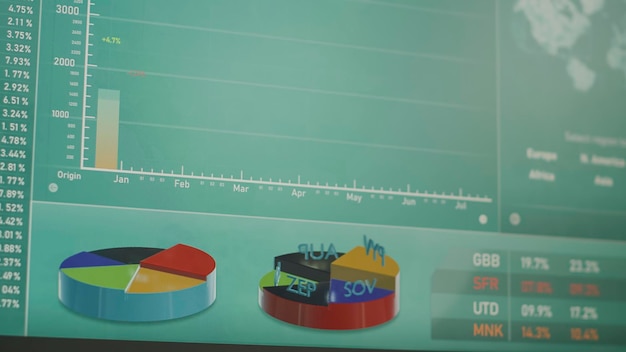Maximize Your Savings: 3 Personal Finance Tips for 2025

Maximize your savings in 2025 by setting clear financial goals, automating your savings, and reducing your expenses through careful budgeting and smart financial decisions.
Ready to take control of your finances and **maximize your savings: 3 personal finance tips for 2025**? It’s time to proactively plan for a secure financial future.
Set Clear Financial Goals
Setting clear financial goals is the first step toward maximizing your savings. Without specific objectives, it’s easy to lose track of your money and spend impulsively. Defining your goals provides a roadmap for your financial journey and helps you stay motivated.
Knowing what you want to achieve allows you to prioritize your spending and allocate your resources effectively. Whether it’s saving for a down payment on a house, paying off debt, or building a retirement fund, having well-defined goals is crucial.
Short-Term Goals
Short-term goals are typically those you aim to achieve within one to three years. These could include saving for a vacation, paying off a credit card, or building an emergency fund. They are often more tangible and easier to accomplish, providing quick wins that boost your confidence.
Long-Term Goals
Long-term goals, on the other hand, are those you plan to achieve over a longer period, such as five years or more. These may include buying a home, funding your children’s education, or securing your retirement. Long-term goals require patience, discipline, and a well-thought-out strategy.
- Define Specific Amounts: Instead of saying “I want to save money,” specify “I want to save $5,000 for a down payment on a car.”
- Set a Timeline: Determine when you want to achieve your goal, such as “I want to pay off my credit card debt in 12 months.”
- Make it Measurable: Track your progress regularly. Monitor your savings and debt reduction to stay on course.
By setting clear, measurable, and time-bound financial goals, you create a solid foundation for maximizing your savings in 2025. This clarity helps you stay focused and make informed financial decisions.
Automate Your Savings
Automating your savings is a powerful strategy to ensure consistent progress toward your financial goals. It involves setting up automatic transfers from your checking account to your savings or investment accounts. By automating, you remove the temptation to spend the money and make saving a priority.
This method works because it leverages the principle of “paying yourself first.” Before you have a chance to spend your income on discretionary items, a portion is automatically set aside for savings. Over time, these small, consistent contributions can add up to significant sums.

Setting Up Automatic Transfers
Setting up automatic transfers is a straightforward process. Most banks and financial institutions offer this feature online or through their mobile apps. You can specify the amount, frequency, and destination account for the transfers.
Benefits of Automation
Automation offers several key benefits. It eliminates the need for manual transfers, reducing the likelihood of forgetting to save. It also helps you stay disciplined, even when you’re tempted to splurge. Furthermore, it allows you to take advantage of compound interest, which can significantly boost your savings over time.
- Schedule Transfers After Payday: Set up automatic transfers to coincide with your paycheck to ensure you save consistently.
- Start Small and Gradually Increase: If you’re new to saving, start with a small amount and gradually increase it as you become more comfortable.
- Diversify Your Savings: Consider automating contributions to multiple savings and investment accounts to diversify your portfolio.
Automating your savings simplifies the process and ensures that you consistently contribute to your financial goals. By leveraging technology and setting up automatic transfers, you can **maximize your savings** effortlessly in 2025.
Reduce Your Expenses
Reducing your expenses is a critical component of maximizing your savings. By identifying areas where you can cut back on spending, you free up more money to allocate toward your financial goals. This involves a thorough review of your current spending habits and a willingness to make adjustments.
One effective approach is to create a budget. A budget helps you track your income and expenses, allowing you to see where your money is going. With this information, you can identify areas where you’re overspending and make informed decisions about reducing your expenses.
Creating a Budget
Creating a budget doesn’t have to be complicated. There are numerous budgeting apps and tools available that can simplify the process. Alternatively, you can use a spreadsheet or even a notebook to track your spending.
Strategies for Reducing Expenses
There are many strategies you can use to reduce your expenses. These range from small, everyday changes to larger lifestyle adjustments. The key is to identify areas where you can cut back without sacrificing your overall quality of life.
- Track Your Spending: Use a budgeting app or spreadsheet to track your expenses and identify areas where you’re overspending.
- Cut Discretionary Spending: Reduce spending on non-essential items, such as dining out, entertainment, and impulse purchases.
- Negotiate Bills: Contact your service providers to negotiate lower rates for your internet, cable, and insurance bills.
Reducing your expenses requires discipline and a willingness to make changes to your spending habits. However, the rewards can be significant. By freeing up more money to allocate toward your financial goals, you can **maximize your savings** and achieve financial security in 2025.
Invest Wisely
Investing wisely is essential for growing your savings and achieving long-term financial success. While saving is important, investing allows you to generate returns and increase your wealth over time. However, it’s crucial to approach investing with knowledge and a well-thought-out strategy.
Diversification is a key principle of wise investing. By spreading your investments across different asset classes, such as stocks, bonds, and real estate, you reduce your risk and increase your potential for returns. A diversified portfolio can help you weather market volatility and achieve consistent growth.
Understanding Investment Options
Before you start investing, it’s important to understand the different investment options available. Each asset class has its own risk and return profile, so it’s essential to choose investments that align with your financial goals and risk tolerance.

Developing an Investment Strategy
Developing an investment strategy involves setting clear goals, assessing your risk tolerance, and choosing investments that align with your objectives. It’s also important to regularly review and adjust your strategy as your financial situation and market conditions change.
- Research Different Investments: Take the time to research different investment options and understand their risk and return profiles.
- Start with a Small Amount: If you’re new to investing, start with a small amount and gradually increase your investments as you become more comfortable.
- Seek Professional Advice: Consider consulting with a financial advisor who can help you develop a personalized investment strategy.
Investing wisely can significantly accelerate your progress toward your financial goals. By diversifying your portfolio, understanding investment options, and developing a sound investment strategy, you can **maximize your savings** and build wealth in 2025 and beyond.
Review and Adjust Your Plan Regularly
Reviewing and adjusting your financial plan regularly is crucial for staying on track and achieving your goals. Your financial situation and market conditions can change over time, so it’s essential to adapt your plan accordingly. This involves reassessing your goals, tracking your progress, and making necessary adjustments to your savings and investment strategies.
Regular reviews allow you to identify potential problems early and take corrective action. For example, if you’re not saving as much as you planned, you can look for ways to reduce your expenses or increase your income. Similarly, if your investments are underperforming, you can rebalance your portfolio to improve your returns.
Assessing Your Progress
Assessing your progress involves tracking your savings, investments, and debt reduction. You can use budgeting apps, spreadsheets, or financial planning software to monitor your progress and identify areas where you’re falling short.
Making Necessary Adjustments
Making necessary adjustments involves tweaking your savings and investment strategies to stay on course. This may involve reducing your expenses, increasing your savings rate, rebalancing your portfolio, or seeking professional advice.
- Set a Schedule for Reviews: Schedule regular reviews of your financial plan, such as quarterly or annually.
- Be Flexible: Be prepared to make adjustments to your plan as your financial situation and market conditions change.
- Seek Feedback: Consider seeking feedback from a financial advisor or trusted friend to gain a fresh perspective on your plan.
Regularly reviewing and adjusting your financial plan allows you to stay on track and adapt to changing circumstances. By being proactive and making necessary adjustments, you can **maximize your savings** and achieve long-term financial success in 2025 and beyond.
Seek Professional Advice
Seeking professional advice can be invaluable for maximizing your savings. A financial advisor can provide personalized guidance based on your unique financial situation and goals. They can help you develop a comprehensive financial plan, choose appropriate investments, and navigate complex financial decisions.
A financial advisor brings expertise and objectivity to the table. They can help you identify opportunities you may have overlooked and avoid costly mistakes. They can also provide emotional support and accountability, helping you stay disciplined and focused on your financial goals.
Benefits of Working with a Financial Advisor
Working with a financial advisor offers several significant benefits. They can provide personalized advice, help you develop a comprehensive financial plan, and offer objective guidance on investment decisions.
Choosing a Financial Advisor
Choosing the right financial advisor is crucial. Look for an advisor who is qualified, experienced, and trustworthy. Check their credentials, ask for references, and make sure their fees are transparent and reasonable.
- Check Credentials: Look for advisors who are certified financial planners (CFPs) or have other relevant certifications.
- Ask for References: Talk to other clients of the advisor to get their feedback on their experience.
- Understand Fees: Make sure you understand how the advisor is compensated and what fees you will be charged.
Seeking professional advice can provide you with the knowledge and support you need to **maximize your savings** and achieve your financial goals. By working with a qualified financial advisor, you can gain clarity, confidence, and a roadmap for success in 2025 and beyond.
| Key Point | Brief Description |
|---|---|
| 🎯 Set Goals | Define specific, measurable financial objectives to guide your saving efforts. |
| ⚙️ Automate Savings | Set up automatic transfers to ensure consistent contributions to your savings. |
| ✂️ Reduce Expenses | Identify and cut back on unnecessary spending through budgeting. |
| 📈 Invest Wisely | Diversify investments and understand different investment options for long-term wealth. |
Frequently Asked Questions
▼
Common financial goals include saving for retirement, buying a home, paying off debt, saving for a child’s education, and building an emergency fund. Setting achievable goals is the first step.
▼
Set up automatic transfers from your checking account to your savings or investment accounts on payday. Start small and gradually increase the amount as you become comfortable.
▼
Easy ways to reduce daily expenses include packing your lunch, brewing your own coffee, cutting down on eating out, and finding free entertainment options. Also, compare prices for groceries.
▼
Regular reviews ensure your plan aligns with your current situation. Life events and market changes affect plans. Adjustments can prevent you from falling behind on your financial goals.
▼
Consider seeking a financial advisor when you need personalized guidance, want help with investment decisions, or feel overwhelmed managing your finances alone. They offer expertise and objectivity.
Conclusion
By setting clear financial goals, automating your savings, reducing expenses, investing wisely, reviewing your plan regularly, and seeking professional advice, you can **maximize your savings** and achieve financial security in 2025 and beyond. Take proactive steps to take advantage of opportunities.